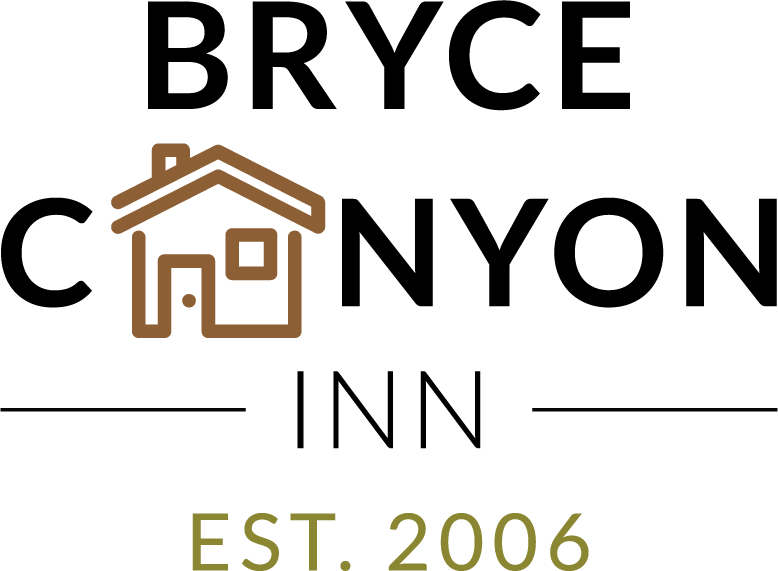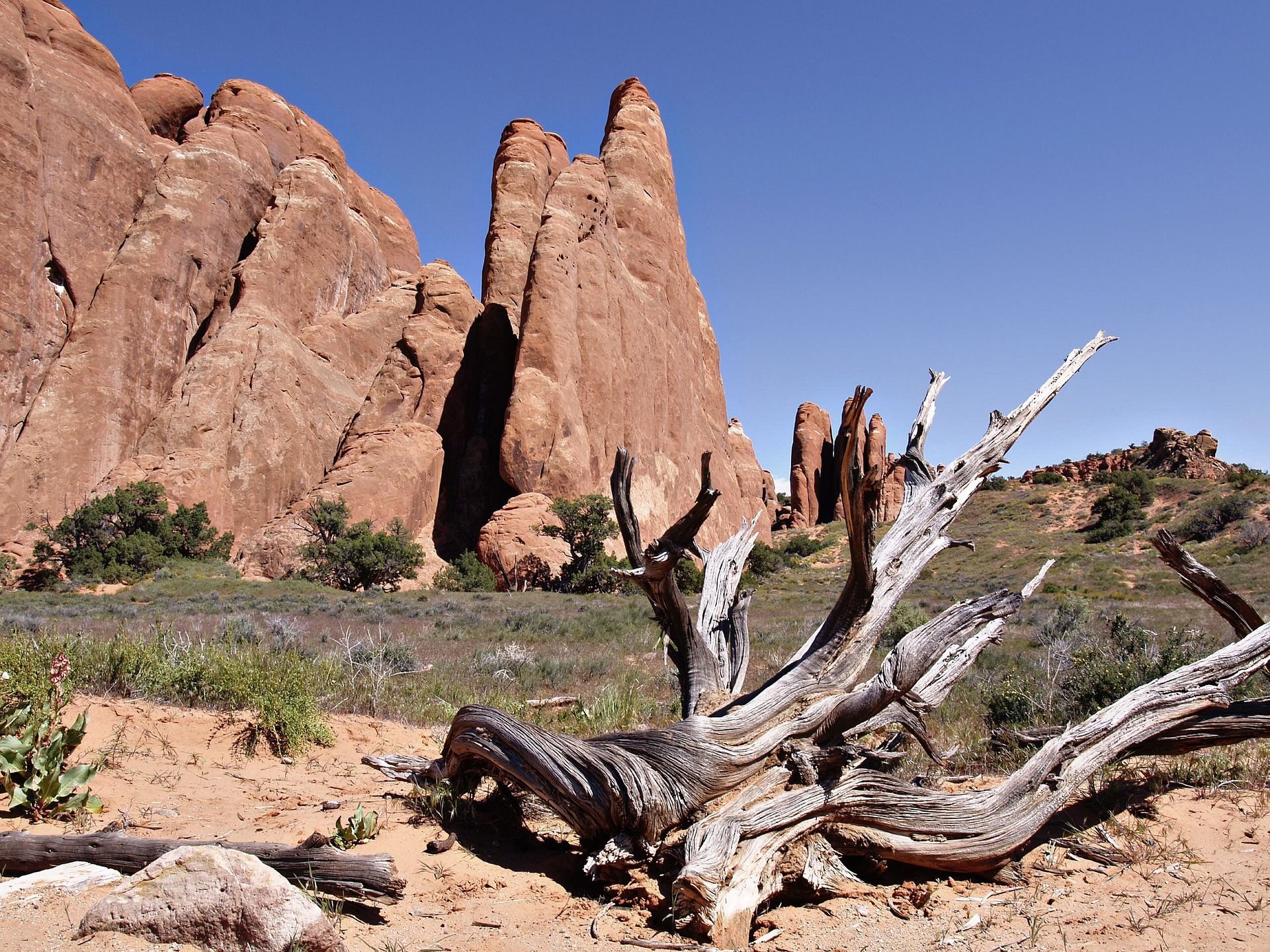Suggested Activities
With so many places to visit near Bryce Canyon Inn, deciding what to do can be overwhelming. Here's a list of some of our favorite attractions that are relatively near our inn. If you have questions about attractions and activities in our area, give us a call. We're happy to make suggestions and recommendations.
Hole-in-the-Rock Road
From Tropic, you will head east on State Highway 12 to the town of Escalante (approximately 39 miles). Ten miles past Escalante, turn right onto Hole-in-the-Rock Road, a well-graded dirt/gravel road that is suitable for most passenger vehicles. This road received its name in the 1880s, when Mormon pioneer families forged the route to the Colorado River. They painstakingly cut a notch into the rock, lowered their wagons 1,500 vertical feet to the riverbed, and then ferried the wagons on rafts across the river. Originally thinking they could make the trip in a few weeks, it actually took six months. The pioneers used the route only for a short time until they found a better one.
The Hole-in-the-Rock Road boasts many awe-inspiring natural formations easily accessible on foot, such as Devil’s Garden and Spooky and Peek-a-boo slot canyons. Be sure to visit the Interagency Visitor Center (755 W. Main) in Escalante to check on weather conditions and get valuable information about these hikes before you go.
Mossy Cave / Cascade Falls
Located only four miles from Bryce Canyon Inn along State Highway 12, the Mossy Cave Trail is an easy, 0.9-mile round trip hike that follows alongside an irrigation ditch to a natural grotto, filled with moss, fed by an underground spring. The right fork of the trail leads to a small waterfall. The wide, sandy path provides an up-close view of Bryce Canyon’s signature orange hoodoos from the bottom up without having to traverse a steep trail or deal with the crowds prevalent in the park’s main section. The ditch, constructed in the 1890s, continues to supply irrigation water to Tropic and Cannonville. The trail is ideal for all ages.
Red Canyon
A forested, red-rock canyon whose spires, pinnacles and hoodoos serve as a preview of Bryce Canyon National Park for those approaching it from the west, Red Canyon is approximately 15 miles west of Bryce Canyon Inn on State Highway 12.
The canyon is famous for its two manmade, drive-through tunnels, which have appeared on numerous television commercials. Numerous short hiking trails provide a more intimate look at the canyon’s natural formations, including the Birdseye Trail, so named for a rock shaped like a bird’s head overlooking the area. Cross-country skiers utilize the trails during the winter to enjoy a unique perspective. Other, longer trails accommodate horses and All-Terrain Vehicles.
Visit the Red Canyon Visitor Center near the base of the canyon for more information about hikes. It is open from Memorial Day to Labor Day.
Devil's Garden
Devil’s Garden is located 12.4 miles down the road after turning off Highway 12. It is on the right (or west) side. A sign marks the turnoff. The “garden” is actually a grouping of many splendid sandstone formations in a wide variety of shapes and sizes. Exploring this natural playground might make you feel as if he you are on another planet. You will find some fossilized dinosaur tracks in a sandstone terrace a little farther down the road from Devil’s Garden.
Spooky & Peek-a-Boo Canyons
Spooky and Peek-a-boo canyons lay 14.2 miles from Devil’s Garden (26.6 total miles from the road’s beginning). Unlike Devil’s Garden, no signs mark the trails to these two canyons, making them a little more difficult to find. The sign marking the turnoff to Spooky and Peek-a-boo reads “Dry Fork,” making no mention of the two canyons. From the main road, this turnoff only travels a quarter mile, ending at a loop parking area.
Once you get out of your car, walk north to the edge looking down into the canyon and wash. Look for some natural stairs that will help you get off the ridge. Head northeast, looking for cairns (rock piles) marking the trail in some places. Descend to the bottom of the wash, following it 200 yards as it curves to the south. Look for Peek-a-boo on your left, on the east wall. This canyon, only approximately 100 yards long, contains arches and winding corridors that the whole family will enjoy.
Spooky Canyon, a more difficult and longer hike, is located down the main wash, around a corner and to the left. This narrow canyon will make you wonder if you can even get through it at times. It requires a little fancy footwork in some places.
If you feel like going further down the road, you can make your way to Dance Hall Rock, at the 40-mile marker. The Mormon Pioneers making the trek down the Hole-in-the-Rock Road stopped at this natural amphitheater to dance and sing before embarking on the most difficult part of their trip. A four-wheel drive vehicle is required to traverse the road all the way to the end, where you can park and walk a few miles to see the hole cut by the pioneers. The hole offers a view of Lake Powell, part of Glen Canyon National Recreation Area. At the end of your excursion, you must return to Bryce Canyon Inn the same way you came.
Grosvenor Arch / Cottonwood Narrows
Drive down the Cottonwood Canyon Road 9.2 miles after it turns into dirt. Do not attempt to traverse the road if it is wet because driving can become extremely difficult in mud. When you reach the Grosvenor Arch sign, turn left and drive about 1 mile. Members of a 1949 National Geographic Society expedition named the arch after the society’s founder, Gilbert H. Grosvenor. Hikers access the spectacular 152-foot high arch via a 100-yard, wheelchair accessible trail. There are picnic tables and restrooms at the base of the trail.
After viewing Grosvenor Arch, return to the Cottonwood Canyon Road, turn left and travel 3.5 miles until the road drops into a beautiful, colorful valley. Go down the hill and park at the bottom in a pull out off the road. You will see a crack on the right leading into the Cottonwood Narrows. No signs mark the trail. This hike, accessed after dropping off a steep bank, offers a rewarding, scenic diversion through a fascinating slot canyon.
Paunsaugunt Wildlife Museum
Displaying over 450 species of animals from all over in life-like dioramas, the Paunsaugunt Wildlife Museum is only a 12-minute drive west of Bryce Canyon Inn on Highway 12. Animals on display range from antelopes and mountain lions to beavers and bugs. In addition to its animal collections, the museum exhibits arrowheads and other Indian artifacts.
Zion National Park
A nearly two-hour drive southwest of Bryce Canyon Inn takes visitors to Zion National Park, which has gained a reputation as the “Yosemite of the Desert.” Zion is Utah’s oldest and most visited national park, averaging approximately 2.5 – 2.7 million visitors every year. The park’s most popular area, Zion Canyon, is home to striking rock monoliths and towering canyon walls the Virgin River has carved over time.
Some of Zion’s most recognized natural wonders are the Court of the Patriarchs, Angel’s Landing, the Watchman, which guards its south entrance, and the 2,200-foot Great White Throne, its most famous landmark. From April through October, a mandatory shuttle system transports visitors through the 6.5-mile Zion Canyon Scenic Drive, stopping at trailheads and points of interest along the route. The shuttle has eliminated traffic congestion, improved the visitor experience, and restored peace and tranquility to the canyon. The shuttle has also increased visitors’ chances of viewing the park’s wildlife, including mule deer, rock squirrels and wild turkeys.
Three of the canyon’s most popular trails, providing visitors with breathtaking views of the canyon’s stunning formations, cascading waterfalls and diverse plant life, are Emerald Pools, Weeping Rock, and Riverside Walk (also known as “Gateway to the Narrows”). One of the park’s most popular hikes for the more adventurous is the Narrows of the Virgin River, which are so narrow in some places that hikers can nearly touch both sides of the canyon wall with outstretched arms. The Kolob Canyon section, located in the northwestern part of the park along the I-15 corridor, is home to Kolob Arch, which is the world’s largest known natural span, a whopping 310 feet.
All Rights Reserved | Bryce Canyon Inn
Website Design & Reservation Software by ResNexus


